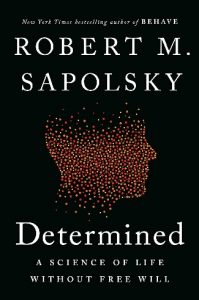How do Vedantins argue against Sam Harris’ comment on spirituality?
If Sam Harris defends rationality the way he does, he appears not to be quite reasonable or wise. He defines himself as an atheist (though he seems now to want to distance himself from that epithet), and such posturing is dogmatic in the way ‘agnostic’ is not.
His defense of rationality is flawed in other respects, and he should realize that; first, apart from science, there is feeling and emotion, fundamental and definitory of man the way he is constituted. Second, modern science does not have all the answers even within its own field of expertise – in any area.
The strictures SH has with respect of religion and the religions (their in-fights, rivalries, etc.) are widely shared by many people, and particularly in Advaita Vedanta, though, it must be said, religion has to 1) be accepted as being an attraction and consolation for the multitudes – a given fact, 2) it can be an intermediary step towards real knowledge of the reality of the world and us (as Iswara is with respect to nirguna Brahman), and, finally, 3) its aspects of surrender, love, participation, and esthetic beauty cannot be dismissed out of hand.
Neuroscience is still a science in its cradle. Not only does it lack many answers related to the brain and its functions, but some of its unknowns are insurmountable, such as what is the nature of consciousness (the ‘hard problem’) as taken from its own perspective. Consciousness or awareness cannot be explained by empirical science; it will always be a purely subjective experience (including objectless consciousness), an ultimate, irrefutable, and irreducible fact.
From the viewpoint of traditional Advaita (Shankara and Gaudapada primarily), there is no reality other than Consciousness (Atman-Brahman – which is/are just names or symbols). Phenomena are the way Consciousness or Atman manifests itself (a sort of play- maya). Multiplicity, space, time, and causality are illusory – that is, from the higher perspective, while they seem to be real from the lower, empirical one.
Empirical scientists have no truck, no real interest, in any of the above. They cannot touch it. Paul King, a prominent neuroscientist, wrote this not long ago in Quora:
“Ultimately, the question of whether or not subjective experience is an irreducible fact may come down to metaphysical stance and not anything that can be “decided” with a rational process.”
 S&T is a creature of S and T!
S&T is a creature of S and T! 